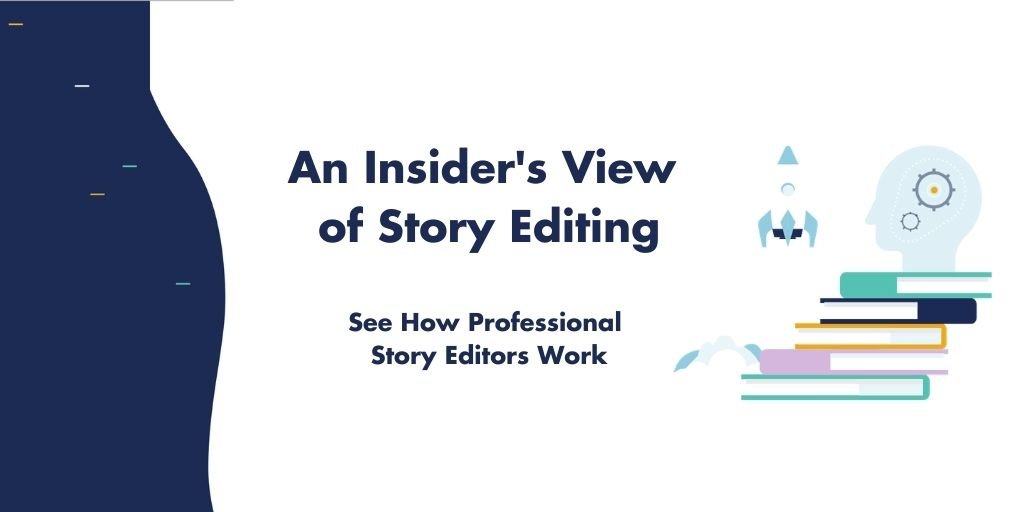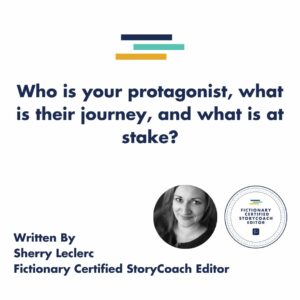
Narrative nonfiction is a term used to describe true stories written in novel format. Like any novel, narrative nonfiction books need, among other things, a strong story arc and a protagonist (or narrative persona) the readers can follow and relate to.
In fact, as Kristina Stanley says in her article, What is Narrative Non-Fiction, “A clear protagonist is key to a successful [narrative non-fiction] story.”
This protagonist must have a clear story goal, and something needs to be at stake.
So, how does an author convey the story, stakes, and emotion of a protagonist in a nonfiction narrative?
This is where creating a narrative persona comes in.
What is a Narrative Persona?
According to the Merriam-Webster’s dictionary online, a persona is:
“A character assumed by an author in a written work.”
Or:
“A character in a fictional presentation (such as a novel or play).”
In the article, What is Persona – Definition and Examples in Literature & Art, Dominique Saint Malo defines persona as:
“. . .the person understood to be speaking or narrating a given work. The persona is often intended to be someone other than the author of that work.”
That being said, in the article The I or the Eye: The Narrator’s Role in Nonfiction, blogger Nora Maynard says that:
“. . . all nonfiction writers have no choice but to . . . put together narrators that are, while at the same time aren’t quite, true versions of ourselves.”
In other words, the personas that authors use to tell nonfiction stories can’t help but to carry some of the author’s own voice.
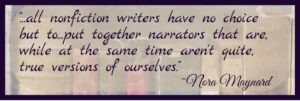
Author vs Narrative Persona
In fiction, readers don’t automatically assume that the author and the narrator (or narrative persona) are the same.
However, as Will Wilkinson says in the article Narrative Persona in Nonfiction:
“. . .in nonfiction, the distinction between the narrator and implied author typically collapses.”
But he also says this idea is naïve and that, because:
“authorial persona is in some ways more important for the nonfiction writer than for the fiction writer.”
Wilkinson asserts that:
“. . .the nonfiction author must be prepared to integrate into her authorial persona her characterization of her narrator, and vice versa.”
He compares a nonfiction author creating a narrative persona to performers and entertainers taking on a professional persona that both is and is not themselves.
This is common with comedians, he says, such as Chris Rock, who performs as himself onstage, but who is notably different in his personal life. He also mentions Beyoncé and her Sasha Fierce persona, among others.
This is the idea of the public versus the private face of an entertainer or, in the case of Sasha fierce, an alter ego. However, because nonfiction is expected to be true or confessional:
“Nonfiction authors [must] pretend not to have. . .[an] authorial persona.”
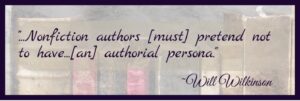
Many sources out there will define and describe narrative persona in slightly different ways, and some of these seem quite complicated.
But, as Saint Malo says in her article:
“Persona is, at its core, the fact that humans behave a certain way. Our actions, our personality, our ‘mask’ is our persona, which can change depending on whether we are alone, with parents, with coworkers, or with friends.”
Narrative nonfiction can be the author’s own story—perhaps one that began in the past, when the author was a ‘different person’—or a non-personal but true story that is researched and recounted.
Depending on the type of story being told, then, the narrative nonfiction author needs to decide which of their ‘masks’ or what parts of their personality they will imbue the narrator’s persona with.
Examples of Narrative Persona in Nonfiction
Bad Blood: Secrets and Lies in a Silicon Valley Startup by John Carreyrou
On the book sales page on Amazon, a quote by the New York Times Book Review says, “Chilling. . . Reads like a thriller.” And it does.
The opening line in the prologue reads:
“Tim Kemp had good news for his team.”
Then, the email Kemp wrote about a phone conversation with Elizabeth Holmes is given in the format of a dialogue, adding to that feeling of reading a work of fiction, of following a story told by a third person narrator.
The book gives information from various sources/players and often ‘speaks’ from different people’s perspectives.
But it does have a clear voice and tone.
Given the fact that this is a nonfiction narrative, readers could assume that this voice would be the author’s own. And it is, to a degree, in that it’s told using the author’s narrative persona.
Writers make a plethora of decisions about their writing, from the largest plot questions all the way down to the most minute details.
In terms of who is telling the story, the narrator may have much in common with the author’s personality but, since the author would have made conscious decisions about voice, tone, and so on, they would be using a narrative persona.
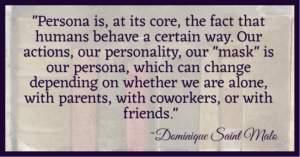
The Immortal Life of Henrietta Lacks by Rebecca Skloot
In this book, ranked as a best-seller under cell biology, the author, Rebecca Skloot, tells the story of Henrietta Lacks—of her life, death, and exploitation by the scientific and biomedical community.
Like the book I spoke about above, though, her story is not presented as a text book or an informative text filled with facts. Instead, it’s presented as a narrative that humanizes her and demonstrates who she was.
From Chapter 1 on, the book is written as a third person narrative, with dialogue and description that often gives such intricate and personal details that it feels like worldbuilding in a work of fiction.
But who is this third person narrator?
It isn’t the protagonist, Henrietta. It isn’t one of the characters in the book or an omniscient narrator. However, there is a clear and consistent voice telling Henrietta’s story—the author’s narrative persona.
Conclusion
If a clear protagonist is key to successful narrative nonfiction, then the key to choosing a narrative persona will be to consider whose story you’re telling. Who is your protagonist, what is their journey, and what is at stake?
Then think about what persona and, hence, what voice would be most effective in telling that person’s story.
- Is it the relaxed, friendly persona you wear with friends?
- Is it the respectful persona you are more likely to show your parents?
- Or would the professional mask of a coworker be more effective?
Choose or create the narrative persona that would best do justice to the protagonist and their story.
References/Further Reading
https://temp-fictionary.flywheelstaging.com/journal/what-is-narrative-non-fiction/
https://www.bookbub.com/blog/best-narrative-nonfiction-books-publishers-blurbs
https://www.studiobinder.com/blog/what-is-a-persona-definition/
https://brevity.wordpress.com/tag/persona-in-nonfiction/
https://willwilkinson.wordpress.com/2014/01/19/narrative-persona-in-nonfiction/
https://www.amazon.ca/dp/B00338QENI?_bbid=111631559&tag=bookbubwebca-20
https://www.amazon.ca/dp/B078VW3VM7?_bbid=124991778&tag=bookbubwebca-20
Article Written by Sherry Leclerc

Sherry Leclerc is a Fictionary Certified StoryCoach editor, Fictionary content creator, Writer’s Digest certified copy editor, and independent author. She is a member of Editor’s Canada, the Canadian Authors Association (CAA), and The Alliance of Independent Authors (ALLi).
Sherry holds a B.A. in English Language and Literature and a B.Ed. She is the sole proprietor of Ternias Publishing, through which she offers various editorial services. She also has a YouTube channel where she has a vlog about writing and editing, titled The Mythic Quill. You can find it on Youtube .
Sherry currently lives in Sydney, Nova Scotia, Canada. You can contact her at sherry@terniaspublishing.com or sherry@sherryleclerc.com
When do you ever get to see what a story editor delivers to a client if the client is not you?
If you’re thinking of becoming a story editor, this course is for you. Our course gives you an insider’s view of what happens in a story edit. This is similar to a structural or substantive edit for fiction.
Before you hire an editor or edit your own story, it’s important to understand what a story edit is.
Thirteen professional editors edited the same novel.
Each editor worked separately in Fictionary StoryCoach.
This course evaluates their edits and shows you what worked and what didn’t. We’ll show you two scenes before editing and after revisions based on the editors’ suggestions. We even compare the editors’ summary letters and per scene notes.
For writers looking to hire a professional story editor, this course shows you what you should receive from a story editor. It will also show you how an editor might look at your story.’
Sign up now for great value.
On sale for $39 USD. Use Coupon INSIDERSVIEW
Regular Price: $99.


